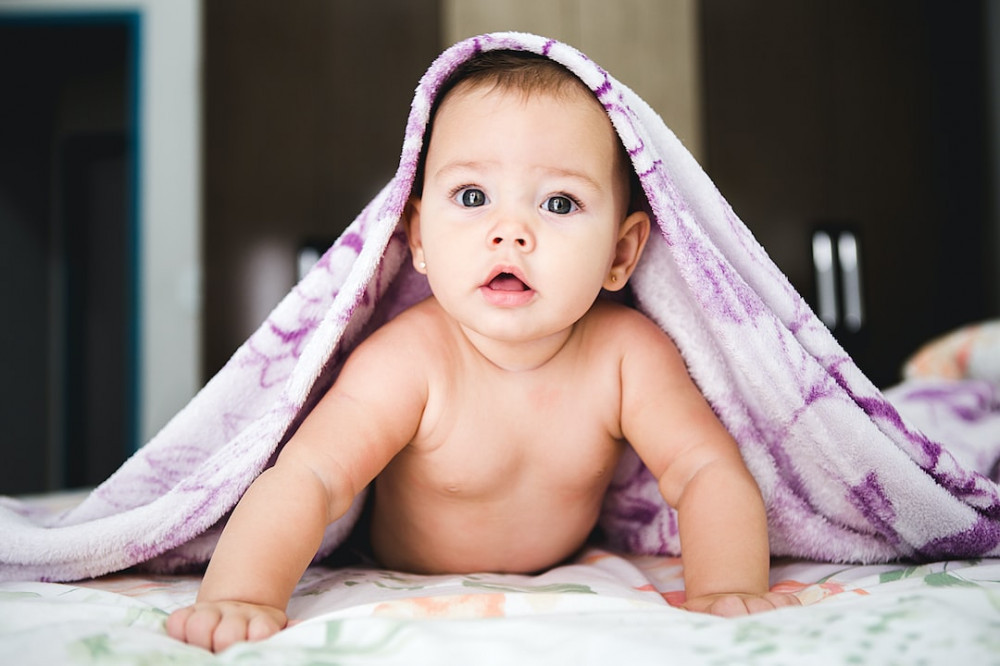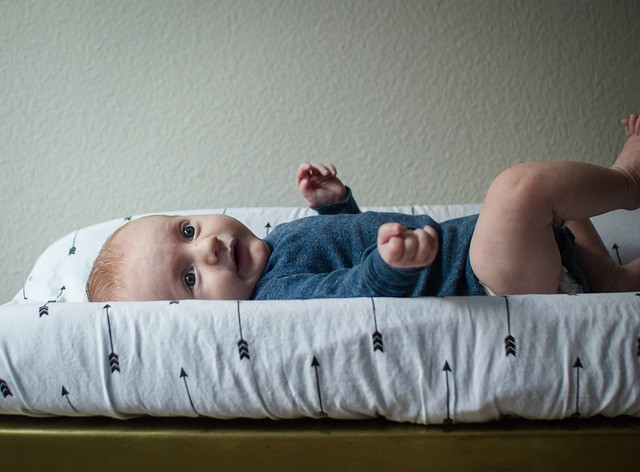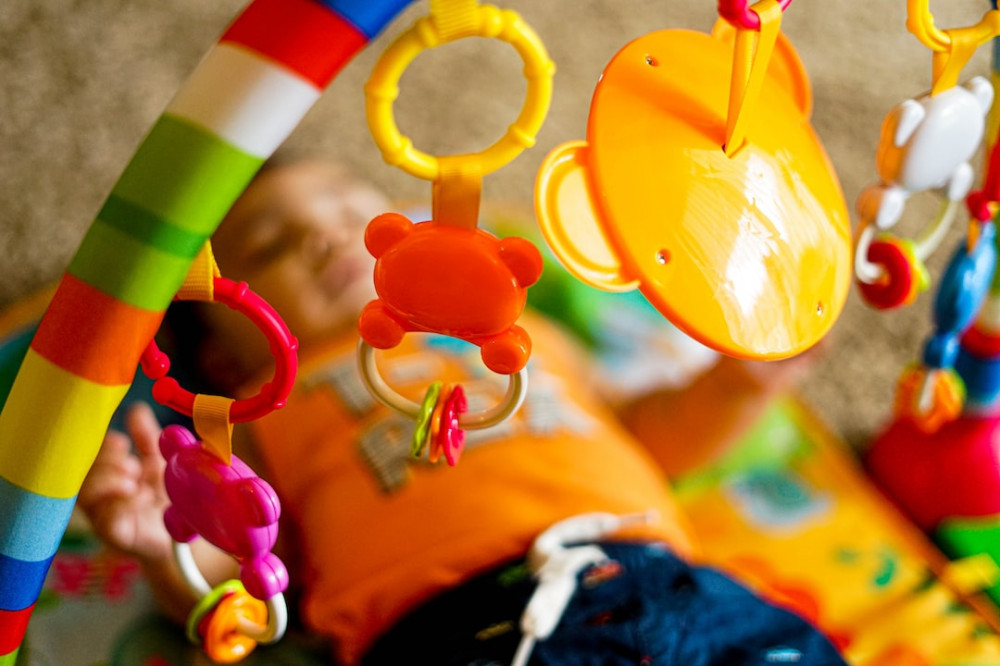
As your baby reach the fourth month, you will find that your baby is more interactive and social with almost everyone. The giggles, the laughing out loud, the squealing in delight would echo in the entire house. Be prepared for more amazing milestones at this age.
What Your Baby May Be Doing At 4 Months old
You can observe that your baby’s activities are increasing. Your baby is now able to raise up on his arms when placed on the belly, and is able to raise chest, supported by the arms, hold the head steady.
He/she may be able to grasp a rattle or any object held unto him.
He/she can roll over (one way).
This is the age when you hear your baby giggle, squeal in delight.
He/she may keep head level with body when pulled to sitting.
He/she may be able to bear some weight on legs when held upright.
Some may be able to sit without support.
He/she turns to the direction of a voice, particularly the parent’s voice.
The Challenge In Diaper Change
As far as cooperation when changing your baby’s diaper is, you can expect less and less as your baby grows older and the physical development continues to spurt ahead. The experience of being temporarily immobilized as you place your baby on his back for diapering will set off with each change.
You will learn to be quick (have all the paraphernalia ready and waiting before you lay your baby on the table) and provide distractions, like offering a toy.

Physical & Mental Stimulation
At this stage, it may be nothing more than pulling your baby to a sitting position (or a standing one) when she’s ready, gently raising her hand over her head, bending her knees up to meet her elbows in a rhythmic way, or holding her up in the air, with your hands around her middle, making her flex her arms and legs.
You want your baby to feel good about her body and about physical activity, so be sure she enjoys this little session.
A baby who is always strapped safely in a stroller or in an infant seat or snuggled into a baby carrier, without opportunity for physical explorations, is well on her way to becoming a sedentary–and unfit– child.
Even an infant who is too little to crawl can benefit from the freedom to move that a blanket on the floor can offer (with supervision).
On their backs, many three and four month olds will spend their great stretches attempting to turn over (help them practice by slowly turning them over and back again).
On their bellies, they would inch around, exploring their hands and mouths, pushing their bottoms up in the air, raising their heads and shoulders.
All of this activity naturally exercises their tiny arms and legs, which is not possible to do in a confined space.
Talk or sing to her and tell her what you are doing. The talking and the singing provides the mental stimulation that your baby needs at this stage. It contributes to your baby’s language development.

Important Things To Know For Your Baby’s Plaything
In this stage, your baby would start to want to explore anything and everything. Therefore, toy safety is very important.
The most obvious reason for a toy purchase is age appropriateness. That your baby will appreciate it and enjoy it fully now.
Giving your baby toys before he /she is ready for them has another disadvantage. It is possible that by the time the baby is
ready for them, he /she will be bored by them.
Is it age appropriate?
How can you tell if a toy is age appropriate for your baby?
One way is the age range on the packaging, though your baby may be able to appreciate a particular toy a little earlier or a
little later than your baby’s age.
Another is to observe your child with a toy – is he/she interested with it?
Is it stimulating?
The right toy will help your baby to perfect skills already learned or promote the development of new ones. It will neither be
to easy (which stimulates boredom), nor too difficult (that promotes failure).
Your baby will have more fun with a toy if it’s stimulating to all the senses ~ sense of sight >> mobile or mirror; sense of
hearing >> rattle, music ox; sense of touch >> activity board, cradle gym; sense of taste >> teething ring.
Is it safe?
Time and time again, hundreds and thousands of injuries are caused by inappropriatle built toys. In selecting playthings for
your baby, set a criteria to be as follows:
* Safe Construction – No sharp edges, removable or breakable parts.
* Safe Finish – make sure that the paint or other finish is not toxic.
* Safe Size – No removable parts that are small enough to be swallowed or present a serious choking hazard
* Washability – as everything that these babies get their hands on is brought to their mouth, their toys at this age should be
washable.
* No strings attached – for strangulation hazard, no ribbons, strings, cords should be left near the baby.
* Safe sounds – look for toys that have musical or gentle sounds. Harsh, sharp, loud sounds can damage your baby’s
hearing.

I want you to feel that you can reach out to me if ever you have questions or want to share ideas that you have related to the care of babies, growing premature babies, and the overall health issues pertaining to the care of babies OR just drop me a comment to say “Hello” or “what’s up”.
All The Best,
Maria Teresa
BabiesBuddies.com



